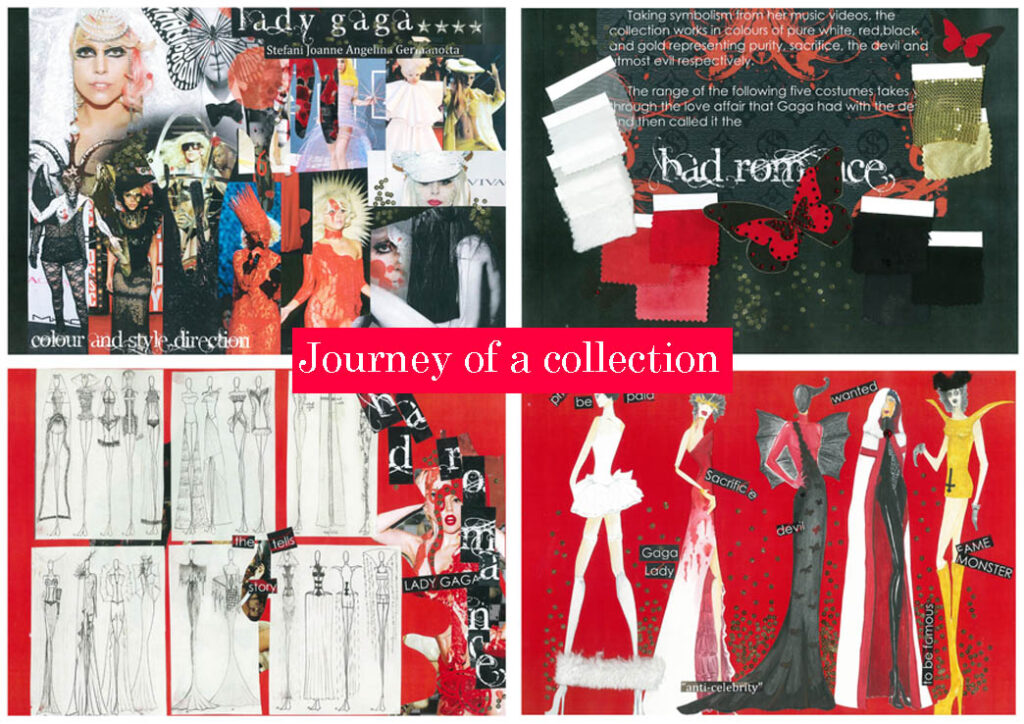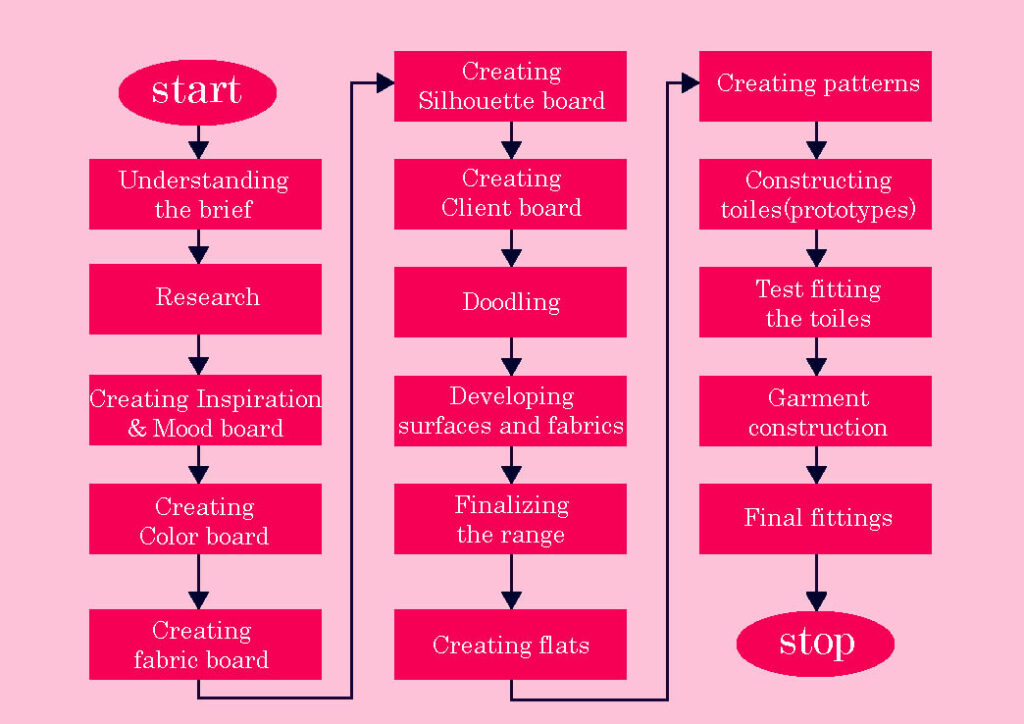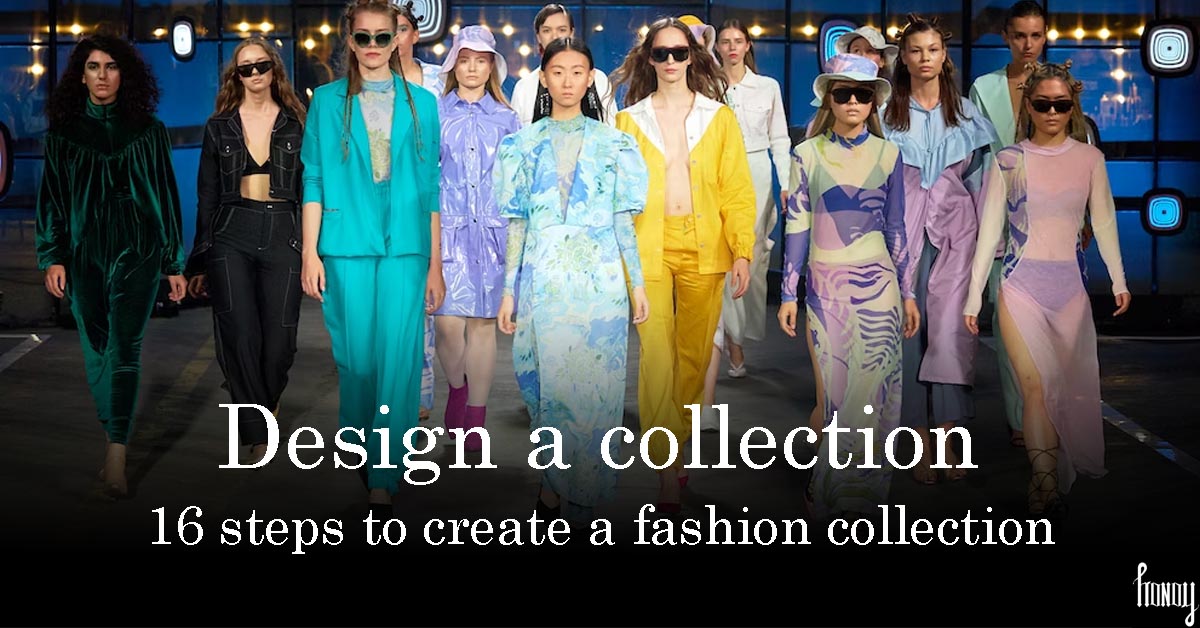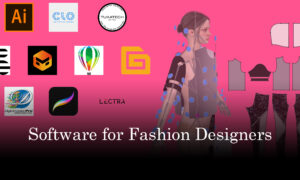Design a fashion collection from scratch
It is not an easy task to design a fashion collection. Becoming a fashion designer is a dream job for many. But what most people do not realize is that it takes passion, perseverance, time, and effort to reach the heights of a successful designer. Whether it is haute couture or ready-to-wear or street fashion, every designer has their approach to creating a fashion statement. But the underlying principles when you design a fashion collection remains the same for all designers.
Here, in this blog post i will tell you ‘How to design a successful fashion collection in 16 steps’. When followed in a series and modifying each process as per the designer’s own preference, you will be able to bring your visionary designs to real life.
1. Understanding the brief
Whether you have your own fashion label or work for a brand, in order to design a fashion collection every designer starts with the collection brief. The brief is simply a document stating some key factors on which the collection is to be developed. Target client profile (age/gender/location etc.), the season (spring/fall), clothing category (couture/RTW etc.) are all details that are provided at the beginning of each collection. It is either generated by the designer himself or is provided by the client.
2. Design a fashion collection with solid research
After understanding the brief, the designer and the design team begins their research for the new collection. Th research elements are twofold: theme/inspiration based and brief based. The designer in order to present something unique to the client will research for a source of inspiration that will serve as the seed of idea generation for new clients. Simultaneously, the team and the designer will research for trends in silhouettes, styles, fabrics, accessories that will help in building up a collection which will quench the consumer’s thirst for something new and fresh. Fashion forecasts are often consulted when conducting the preliminary research.
3. Creating Inspiration & Mood board
Once a thorough research has been done to the designers’ satisfaction, the research material is analyzed and synthesized in creating ‘inspiration and mood boards.’ These boards serve as creative reminders of the direction the designer wishes to proceed in when imagining new designs. I will discuss in detail how to create these boards in detail in future posts. But to have a successful inspiration board, every designer should develop these ‘ 5 habits of successful fashion designers ‘ .
4. Creating Color board
Based on the research of the trends and forecasts, the color story for the collection is created. This color board will serve as the guidelines for all the shades and tints that will be used in designing the collection. Base and accent colors are defined, and pantone swatches are often consulted to get the right tone of the color. Having a color board in front of the eyes will help the designer in visualising the color combinations for the collection. I will discuss in detail how to create these boards in detail in future posts.
5. Creating fabric board
Similar to the color boards, a fabric board is created by sourcing various fabrics. The fabrics swatches are collected on the bases of season, trend, forecast and often designer’s signature fabric (a fabric that the designer uses often to create designs). I will discuss in detail how to create these boards in detail in future posts.
6. Creating Silhouette board
The silhouette board is created by keeping all the styles that the designer wants to pursue as inspirations for his own collection. Again, by consulting the research done on trends and forecasts, these styles are curated for the designer’s vision for the collection. I will discuss in detail how to create these boards in detail in future posts.
7. Creating Client board
A very crucial aspect of designing a fashion collection is the end consumer itself. The consumer upon looking the garment should be able to visualize for themselves how they would look in those new designs. For doing that, designer’s have a client board. This board often involves factors like age group of the target client, gender, purchasing power of the consumer, geographical and cultural constraints, psychographic information like likes and dislikes. I will discuss in detail how to create these boards in detail in future posts.
8. Doodling
Now that the designer/design team is equipped with all the raw information it is time to start designing. Doodling means creating rough ideas in quick succession without much focus on tiny details. The designer will rapidly create design that crop up in his imagination that are inspired from the various boards in front of him. This process usually takes up from few days to weeks depending on the size of the collection to be designed.
9. Developing surfaces and fabrics
While the designer focuses on designing, another creative part that takes place simultaneously is fabric development. Based on the forecast, research and inspiration, various surface treatments like dye, embroidery, surface treatments are created. Either the designer himself or the design team as a whole can take the responsibility of focussing on this portion of collection design.
10. Finalizing the range
Once the fashion designer has generated enough ideas in doodles, and surfaces, the design team and every member involved in the process of designing the collection comes together and have a discussion on which designs to take forward. At this stage, details re finalized like fabric selection for individual designs, surface development, color combinations and every other detail that will be required to create the final garment.

A collection is a journey from inspiration to realization: clockwise from top left: mood board, fabric & trim board, final range and doodles
11. Creating flats
When you design a fashion collection, it does not end at just drawing them. Post range selection, it is time to get technical. The designer’s sketches are to give an idea what the garment will look like once constructed. But the construction team (patternmaker, cuter, seamsters) needs to know the blueprint of the garment in order to bring the designers vision to reality. This blueprint is made via flat sketches. Flat sketches are technical drawings that show what are the details in the garment like measurements, joints, placements etc. Any mistake in the flat sketches can destroy the entire design.
12. Creating patterns
Once the fashion designer and the design team has finalized the designs, flats are created, the sketches are hand over to the ‘pattern master’. The master will create brown-paper patterns based on the measurements provided for the design. There are universally set standards for notations on the patterns so the information provided can be read and understood by anyone using the patterns.
13. Constructing toiles(prototypes)
This is a precautionary step where the actual fabric is not used but a similar fabric (in weight and quality) is cut to create a prototype of the final design. Any corrections that the design may need depending on the designer’s requirement or due to technical problems are done in the toile.
14. Test fitting the toiles
The toile is test fitted on either a live model or a mannequin. The flow and fit of the garment are checked. Designers pay special attention as this is the phase where any changes that the designer wants in the design are made. These corrections are then applied to the toile, and they are checked again. Once the toile has been approved, the final paper patterns are made with the required changes.
15. Garment construction
Once the toiles have been approved by all the concerned members of the design team, it is now time to make the final garment. All the corrections that have ben suggested earlier are employed here. This is the final stage and extra care is taken to make a flawless garment as this will further go for photoshoots and presentations and quality checks.
16. Final fittings
Even though the toile and patterns have been corrected, the final garment is still checked on a live model or a mannequin. Though the chances are very less, but there may be circumstances that may require changes in the final garment.

This is a loose translation of the process of designing
Conclusion
Now you have seen that in order to design a fashion collection is an awe inspiring. From the initial spark of inspiration to the final product creation, every step in creating a fashion collection is a labor of love. Again, this is a basic framework which is always modified in accordance with the working style of the designer, the category of clothing and other affecting factors. You as a designer will begin by taking these steps as a guideline, but with practice you will develop your own style and method of creating a collection that will have your signature.
So, is this what you had in mind, what it takes to design a fashion collection ? Let me know if you wish to know in detail about any of the above processes. And have look at my fashion collections.





























Pingback: 13 most important fashion design skills in fashion schools
Pingback: Ralph Lauren an American fashion icon in 5 min
Pingback: Gianni Versace The Most Daring Italian Designer In 5